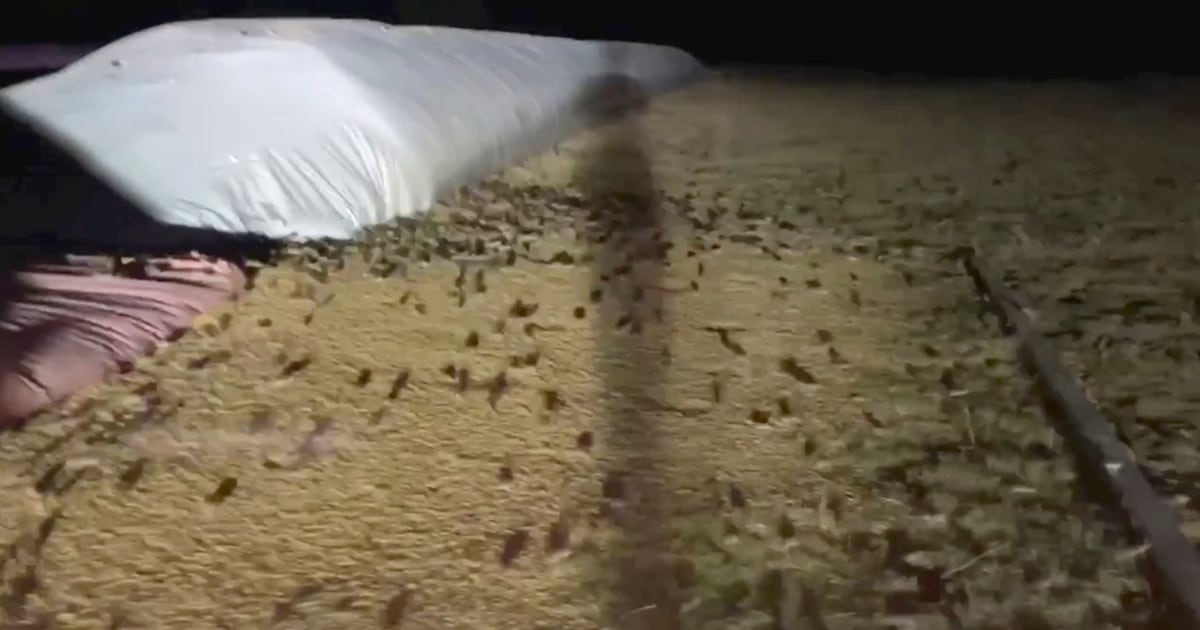SYDNEY – After one of its worst forest fire seasons and a global pandemic, Australia now faces its latest challenge: a “monumental” plague of mice.
Millions of rodents are going crazy in parts of eastern Australia, with residents sharing terror encounters daily.
With an epicenter in rural New South Wales, farmers uploaded videos to the social networks of rats covering their land, damaging crops and taking up residence in homes.
Guy Roth, who works on an extensive research farm at the University of Sydney, near the city of Narrabri in New South Wales, said rats had invaded the property.
“I know we had two rats per square meter in our growing paddocks at the peak … [so] if I get the math right, that’s 20 million mice. This is more mice than the population of most large cities, ”he said.
Roth said that at one point he and his family were picking up and disposing of about 100 rats a day inside their homes and offices.
“They are all over the house. Each time you open a drawer, you will potentially find one, ”he said. “You will be sitting at the table and a mouse will go over it.”
He said the rats ate the cotton crops and also the grain stored in silos.
Roth, who spent his entire life in the region and in rural Australia, said this was “the worst rat plague I have ever seen”.
“They certainly smell. This is how my memory will be – the smell, ”he said. “The smell of dead mice inside and around the house and the farm.”
Although the health impact on humans was not severe, there was at least one report of a rare disease related to lymphocytic choriomeningitis in mice.
And at least three people were bitten by rats in New South Wales hospitals while being hospitalized for reasons unrelated to rats.
A spokesman for the NSW Health state government’s health department said these stings were “mild” and “proper treatment was provided”.
“The NSW health team is responding with appropriate control measures,” said the spokesman, listing measures including increased baits and traps, odor repellents and blocking access.
The spokesman added: “The current rat infestation in western NSW is a natural occurrence.”
What is causing the plague?
Steve Henry conducts research on mice with Australia’s national scientific agency, the Commonwealth Scientific and Industrial Research Organization.
Henry said the outbreak, which is of non-native domestic mice, is “monumental” and continues to have serious economic and social effects.
“Some farmers are giving up on the summer crops … because the mice have damaged them so much, so this is essentially a total loss of the harvest,” he said. “And in some scenarios in which farmers were able to get the crops to harvest, they had to reject it because it was full of rat poop.”
But he said that pests in mice can appear every five to 10 years in Australia due to a combination of factors.
“We had a series of dry years and [now] the drought is over, so the rats attach themselves to this change in environmental conditions and start to reproduce, ”he said. “Farmers have a good harvest and that puts a lot of food in the system. So you have favorable climatic conditions, favorable food in the system, a lot of good shelter, a lot of humidity. “
And he said the mice are prolific breeders, as they can “start breeding when they are 6 weeks old, and then they can have a litter of six to 10 puppies every 19 to 21 days after that”.
But Henry said that a plague on mice usually ends abruptly with “a population drop”, although it is difficult to predict when it will occur.
Winter harvests
Farmers in plague-stricken areas are now looking at winter crops, which in this part of the southern hemisphere are normally sown in April and May.
The NSW Farmers industry group has “serious concerns” that some farms will lose all seeds planted to mice.
NSW Farmers President James Jackson said urgent action by the state government is needed, including emergency permission for the use of the zinc phosphide pesticide and financial assistance through a small grant program.
“Mouse control is very expensive. The severity of the current plague has resulted in the need for multiple applications of aerial and terrestrial baits in growing regions … We need to act now, ”he said.
According to the group, heavy rains in the past few days have reduced the number of rats in some areas, but they are still “rampant” in the Midwest and Northwest of NSW.
“I hear that the rain has pushed more people into houses and vehicles,” said group spokesman Michael Burt.
For now, Australians like Roth hope the plague will end quickly.
“Everyone is tolerating this, but we really have had enough,” he said.
